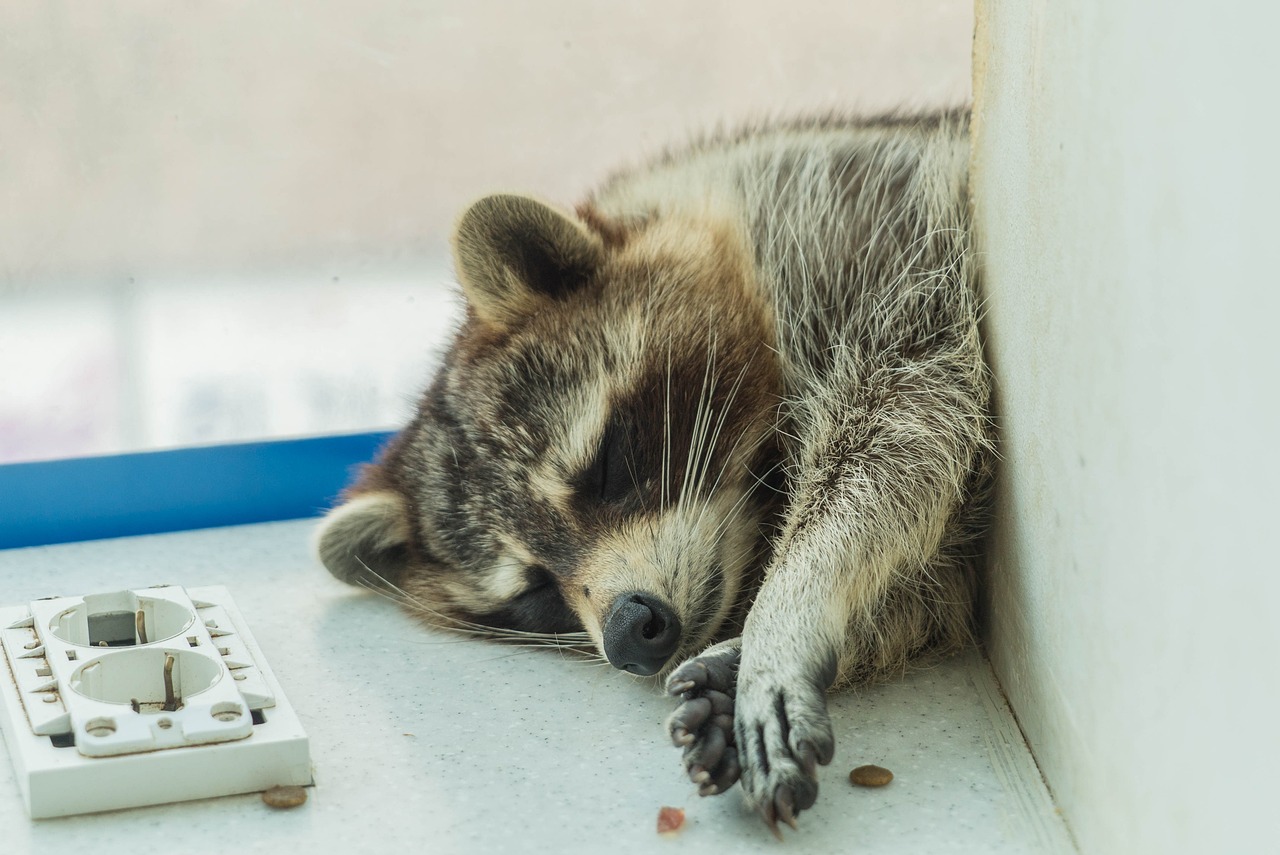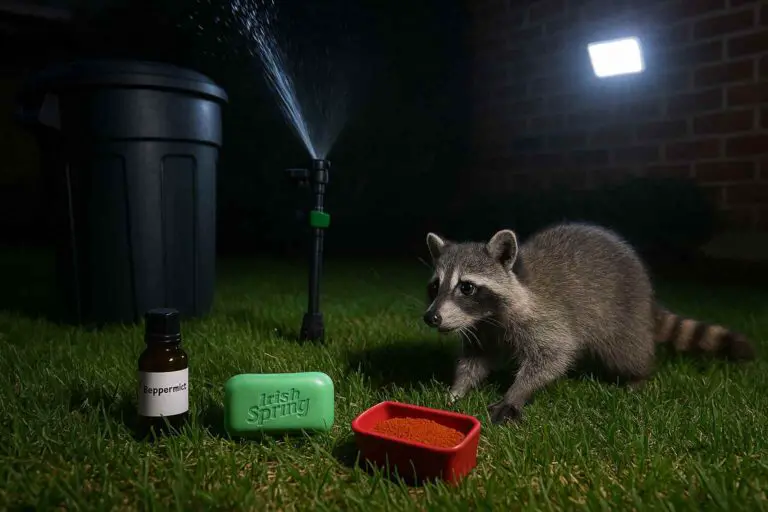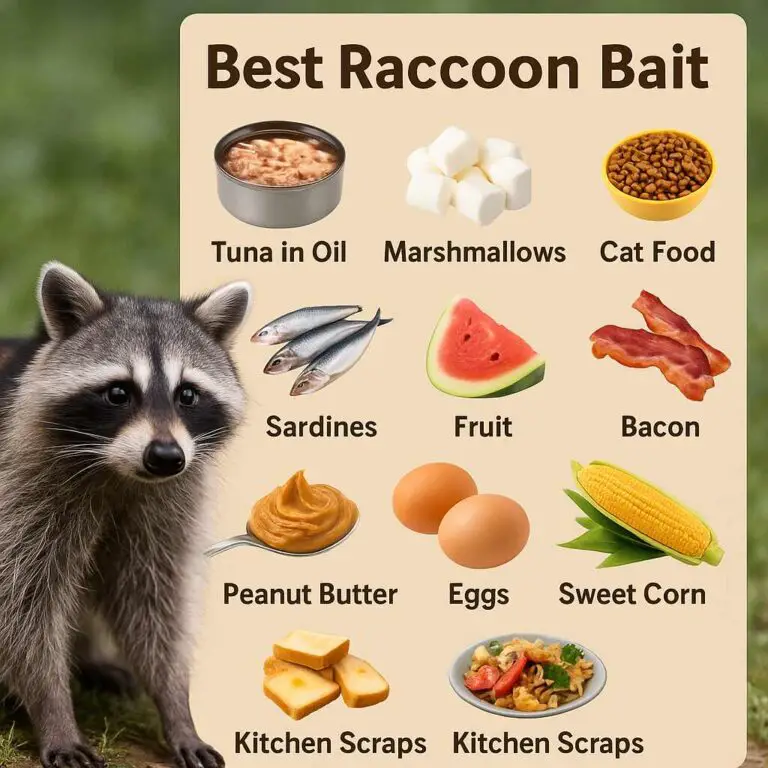Raccoons are intelligent and resourceful creatures, known for their adaptability and problem-solving skills. While they may seem cute from a distance, having raccoons invade your attic can lead to a host of problems, from damaged insulation and wiring to health risks due to their droppings. If you find yourself dealing with a raccoon infestation in your attic, it’s essential to take action promptly.
One effective way to deter raccoons from your attic is by using raccoon repellents. These products are designed to discourage raccoons from making themselves at home in your attic space. In this comprehensive guide, we’ll explore the best raccoon repellents available on the market and provide you with valuable information to help you make an informed decision.
Understanding the Raccoon Problem
Before delving into the world of raccoon repellents, it’s crucial to understand why raccoons might be attracted to your attic in the first place. Raccoons are drawn to attics for several reasons:
- Shelter: Attics provide a warm and safe shelter for raccoons to nest and give birth to their young. The insulation and cozy environment make it an appealing option for raccoons looking for a den.
- Food: Raccoons are opportunistic feeders and will scavenge for food wherever they can find it. If your attic contains stored food or garbage, it can attract raccoons looking for an easy meal.
- Access: Raccoons are excellent climbers and can easily access your attic through damaged vents, openings, or loose shingles. They are also known to pry their way into attics by damaging eaves and soffits.
- Safety: Raccoons prefer secluded and quiet spaces for their nesting sites. Attics are often undisturbed, making them an ideal spot for raccoons to raise their young.
Now that we understand why raccoons may choose your attic as their home, let’s explore the various repellent options available to help you reclaim your space.
Types of Raccoon Repellents
There are several types of raccoon repellents on the market, each with its own set of advantages and limitations. Here are some of the most common types:
1. Chemical Raccoon Repellents:
Chemical raccoon repellents typically come in the form of sprays, granules, or liquid concentrates. They rely on strong odors or tastes that raccoons find offensive, deterring them from entering or staying in your attic. Common active ingredients in these repellents include:
- Ammonia: Raccoons dislike the smell of ammonia and may avoid areas where it is present. You can soak rags or cotton balls in ammonia and place them strategically in your attic.
- Pepper or Capsaicin: These repellents use the spicy properties of peppers to create an unpleasant sensation for raccoons. They can be applied as sprays or granules.
- Predator Urine: The scent of predator urine, such as coyote or fox urine, can signal danger to raccoons and keep them away. These products are available in liquid or granular form.
- Mothballs: While not specifically designed for raccoons, some people use mothballs to repel them. However, it’s essential to use caution, as mothballs can release harmful chemicals when exposed to air.
Chemical raccoon repellents can be effective in deterring raccoons initially, but their effectiveness may diminish over time as raccoons become accustomed to the odor. You may need to reapply these repellents regularly.
2. Ultrasonic Raccoon Repellents:
Ultrasonic raccoon repellent devices emit high-pitched sounds that are annoying to raccoons but generally inaudible to humans. These devices are often motion-activated and can be placed in your attic to deter raccoons from entering.
The advantage of ultrasonic repellents is that they are non-toxic and won’t harm the raccoons or other animals. However, their effectiveness can vary, and some raccoons may become accustomed to the sound over time.
3. Physical Barriers:
Installing physical barriers is a more permanent solution to keep raccoons out of your attic. These barriers can include:
- Mesh Screens: Covering openings and vents with mesh screens can prevent raccoons from gaining access to your attic.
- Sealing Entry Points: Identify and seal any potential entry points in your attic, such as gaps in the eaves, broken shingles, or loose soffits.
- Electric Fencing: Installing an electric fence around your property can deter raccoons from approaching your home in the first place.
Physical barriers are highly effective but may require professional installation and can be costly.
4. Natural Repellents:
Some natural substances can also repel raccoons. These include:
- Essential Oils: Certain essential oils, like peppermint, eucalyptus, or cedar, can be used to create a raccoon-repelling scent in your attic.
- Spices: Sprinkling spices like cinnamon or black pepper in your attic can create an unpleasant environment for raccoons.
Natural repellents are safe and eco-friendly but may require regular reapplication for sustained effectiveness.
Factors to Consider When Choosing a Raccoon Repellent
Selecting the best raccoon repellent for your attic requires careful consideration of several factors:
1. Type of Infestation:
Assess the severity of your raccoon infestation. If you have a minor issue with one or two raccoons, a chemical or natural repellent may suffice. However, for larger infestations or recurring problems, physical barriers or professional intervention may be necessary.
2. Safety:
Consider the safety of the repellent for your family and pets. Chemical repellents may contain toxic ingredients, so use them with caution, especially if you have children or pets in the house. Ultrasonic and natural repellents are generally safer options.
3. Effectiveness:
Different repellents have varying levels of effectiveness, and raccoons can be persistent. Read reviews and seek recommendations to find a repellent that has a proven track record of success.
4. Ease of Use:
Some repellents require regular reapplication, while others are set-and-forget. Consider how much effort you’re willing to put into maintenance and choose a repellent that fits your lifestyle.
5. Budget:
Repellents vary in price, from affordable options like natural repellents to more costly solutions like physical barriers. Determine your budget and look for repellents that offer the best value for your needs.
Top Raccoon Repellents for Your Attic
Now that you have a better understanding of the types of raccoon repellents and the factors to consider, let’s explore some of the top products available on the market:
1. Critter Ridder Animal Repellent Granules by Havahart:
Type: Chemical (Granules)
Active Ingredients: Capsaicin (pepper), piperine (black pepper), and oil of mustard
Effectiveness: Highly effective against raccoons and a variety of other nuisance animals.
Safety: Safe for use around children and pets when used as directed.
Ease of Use: Sprinkle the granules around the perimeter of your attic or any areas where raccoons may enter.
Critter Ridder Animal Repellent Granules by Havahart is a trusted choice for many homeowners. Its combination of spicy ingredients creates an unpleasant sensation for raccoons, encouraging them to stay away from treated areas. The granules are weather-resistant and provide long-lasting protection.
2. Nature’s Mace Raccoon Repellent Spray:
Type: Chemical (Spray)
Active Ingredients: Ammonium soaps, fatty acids, and garlic
Effectiveness: Provides effective raccoon deterrence when applied as directed.
Safety: Safe for use around children and pets when used as directed.
Ease of Use: Simply spray the repellent in areas where raccoons are a problem, including your attic.
Nature’s Mace Raccoon Repellent Spray is a versatile option that can be used both indoors and outdoors. Its blend of ingredients creates an unpleasant odor for raccoons, making them less likely to linger in treated areas. This spray is easy to apply and can be used on a variety of surfaces.
3. Hoont Motion Activated Jet Blaster Repeller:
Type: Ultrasonic
Effectiveness: Highly effective when motion-activated; it releases a burst of water and sound to deter raccoons.
Safety: Safe for humans and pets.
Ease of Use: Place the device in your attic or near potential entry points, and it will activate when it detects motion.
The Hoont Motion Activated Jet Blaster Repeller combines ultrasonic sound and a water jet to startle and deter raccoons. This device is motion-activated, making it an excellent choice for attics and other areas where raccoons are active. It’s weatherproof and durable, ensuring long-term effectiveness.
4. Mesh Screens and Sealing Materials:
Type: Physical Barriers
Effectiveness: Highly effective when installed correctly, preventing raccoons from entering your attic.
Safety: Safe for humans and pets.
Ease of Use: Installation may require professional assistance, but once in place, they provide long-lasting protection.
Mesh screens and sealing materials are permanent solutions to keep raccoons out of your attic. While they require upfront installation costs, they offer reliable protection and are an excellent investment for long-term prevention.
5. Peppermint Essential Oil:
Type: Natural Repellent
Effectiveness: Moderately effective; raccoons find the strong scent of peppermint unpleasant.
Safety: Safe for humans and pets; natural and non-toxic.
Ease of Use: Soak cotton balls in peppermint essential oil and place them in your attic or near potential entry points.
Peppermint essential oil is a natural and non-toxic option to deter raccoons. Raccoons dislike the strong scent of peppermint, and placing soaked cotton balls in your attic can create an unwelcoming environment. However, this method may require regular reapplication for sustained effectiveness.
Additional Tips for Raccoon Control
In addition to using raccoon repellents, here are some extra tips to help you effectively control raccoon infestations in your attic:
1. Remove Attractants:
Ensure there are no food sources or garbage near your home that might attract raccoons. Secure trash cans and keep pet food indoors.
2. Regular Inspection:
Inspect your attic and the exterior of your home regularly for signs of raccoon activity, such as damaged vents, entry points, or droppings.
3. Seal Entry Points:
Immediately seal any openings or gaps that raccoons could use to enter your attic. This can help prevent future infestations.
4. Trim Trees and Shrubs:
Raccoons are skilled climbers. Trim tree branches and shrubs that provide easy access to your roof and attic.
5. Professional Help:
If your raccoon problem persists or becomes severe, consider seeking the assistance of a professional pest control service. They can safely and effectively remove raccoons from your property.
Conclusion
Dealing with raccoons in your attic can be a challenging and frustrating experience, but with the right raccoon repellent and proactive measures, you can effectively deter these creatures from making your attic their home. When choosing a repellent, consider the type of infestation you’re dealing with, the safety of the product, its effectiveness, ease of use, and your budget.
Remember that raccoon repellents may provide temporary relief, but it’s essential to address the root causes of the infestation, such as food sources and entry points. Combining repellents with preventive measures and regular inspections will help ensure that raccoons stay out of your attic and your home remains raccoon-free.









